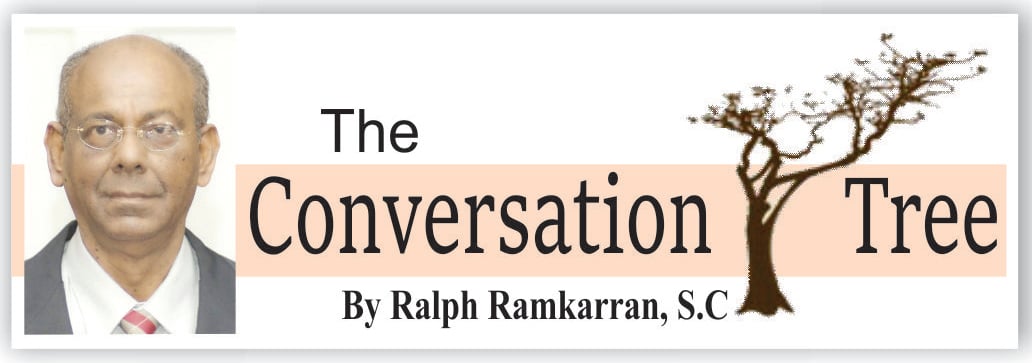Editorialising on “Mining and Amerindians” last Friday, after my article, “Chinese Landing” on Sunday, Stabroek News largely adopted the point of view of the Amerindians of Chinese Landing as its own. In doing so SN tendentiously describes some of what I said as ‘baffling’ and ‘bizarre.’ SN suggested that since Chinese Landing got “no support from the local court system,” they had to resort to IACHR. This is not what happened.
Chinese Landing did not seek any support from the court system. The court cases were filed by GGMC. The first was intended for Mr. Wayne Vieira to cease mining, there being no agreement between him and the Chinese Landing Village Council. The second was not to renew his mining permits because he did not have such an agreement. Mr. Vieira’s defence, in part, was that Chinese Landing had refused to enter an agreement with him and had been engaging in illegal mining. Chinese Landing resorted to the IACHR when their illegal mining served as invitation to 400+ “outside” illegal miners in a village of 300+ and the GGMC and Government could not or would not stop the “outside” illegal mining.
The key provisions of section 48 of the Amerindian Act 2006 are that: a miner who wishes to carry out mining activities on village lands shall (a) obtain necessary permissions and comply with applicable laws; (b) make available to the Village Council information that it requests; (c) give the Village Council a written summary of the proposed mining activities, with six specified items: (d) attend consultations with the Village Council as it requests; (e) negotiate with the Village Council in good faith; (f) reach agreement with the Village Council on the tribute to be paid; (g) obtain the consent of at least two-thirds of the members of the Village Council.
Section 49 provides that: (a) after compliance with section 48 the Village Council shall enter into a written agreement with the miner; (b) the agreement shall contain an offer of employment to Village members at market rates; (c) the miner shall not offer employment to non-residents unless skills are not available: (d) the miner shall purchase all food from the Village if available at reasonable prices: (e) the miner shall take reasonable steps to avoid damage to the environment, pollution of ground and surface water, interference with agriculture, damage to flora and fauna, disruption of residents’ normal activities; (f) the miner, his employees and agents shall comply with rules of the Village Council made under section 14; (g) if the Village so requires the miner and the Village shall include the following in the agreement: (i) a protocol regulating the use of alcohol by the miner, his agents and employees; (ii) requirements for reporting to the Village Council; (iii) an environmental protection programme; (iv) a waste disposal plan; (v) a mechanism for resolving conflict; (vi) a health programme; (vii) support education in the Village.
These were the substantial benefits that Mr. Wayne Vieira was legally obliged to provide to the Chinese Landing villagers. Because of the refusal of the Village Council to negotiate and enter into an agreement with Mr. Vieira, efforts which he outlined extensively in the case before Chief Justice Chang, the villagers have been deprived of these benefits since 2006, including a higher than normal tribute of 6 percent.
The rights of indigenous peoples to subsoil benefits vary around the world. In Guyana, the Amerindian Act 2006, for the first time, provided that Amerindians must benefit from subsoil rights. What is missing in the legislation is a regulatory framework to enforce the rights and mediate disputes such as in the Wayne Vieira case. Arising from GGMC’s first case, the CCJ’s decision, the Government ought to have amended the Mining Act to enable GGMC to issue a cease work order for violation of the Amerindian Act, but did not do so. Secondly, Chief Justice Chang’s patently contradictory decision, upheld by the Court of Appeal, that Vieira does not require an agreement with the Chinese Landing Village Council to renew his mining leases, left GGMC powerless to enforce the provisions of the Amerindian Act.
Chinese Landing had not lifted a finger to invoke the assistance of the courts up to that point. The only assistance they wanted was for GGMC and/or the Government to protect their illegal mining from “outside” illegal miners. With ineffective law enforcement in the hinterland and with GGMC having exhausted all options, there should be no surprise that “outside” illegal mining proliferated, following the example of Chinese Landing. Chinese Landing claims relate only to their security, jeopardized by “outside” illegal miners, which hinder their illegal mining activities. That is why they oppose a cessation of mining. And a fact-finding exercise by the Government, as mandated by IACHR, will expose their illegal mining, which they have not denied anyway.
Amerindians have no rights, and never had, to conduct mining activities, “artisanal,” as suggested in the editorial, or otherwise, on land held under mining permits by other persons. The law is clear. Section 112 of the Amerindian Act states: “It shall not be lawful for any Amerindian to take any mineral from any land which is subject to a licence or permit under this Act…”
(This column is reproduced with permission from Ralph Ramkarran’s blog, www.conversationstree.gy)






